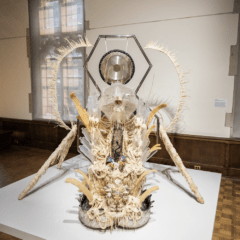It’s good to step away from the computer and into groups of people. It affirms how wonderfully varied and rich the Philadelphia art world is. Here, just a few comments about a couple things going on this month that you may have missed.
Sister Spaceship at Practice Gallery
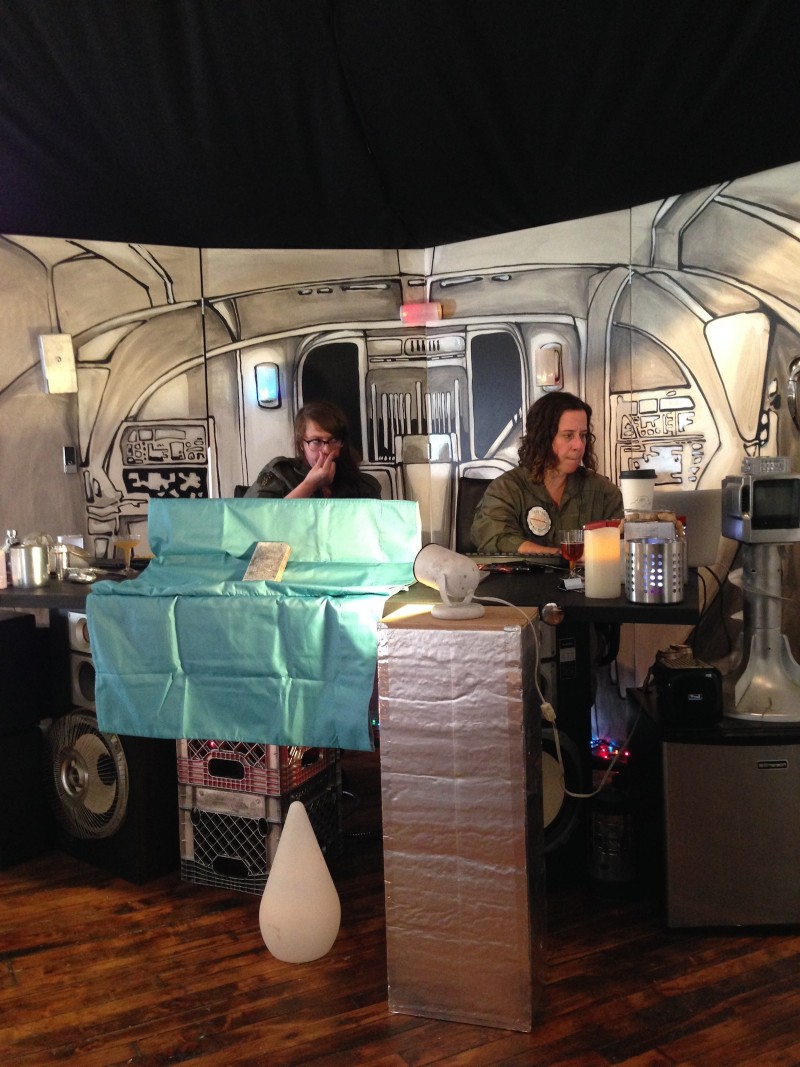
Who doesn’t love a good spoof of something so spoof-worthy it is bound to be good. When I heard Sister Spaceship was hosting an Antiques Road Show in their cardboard and duck tape spacepod at Practice I knew it was a must see.
The participatory event featured the duo, Kristen Mills and Angie Melchin, suited up in space command gear and seated at their controls (appropriate flashing lights). There was canned audience applause and music, some of it outer spacey, but the ambiance was Tonight Show in a garage, and wholly endearing.
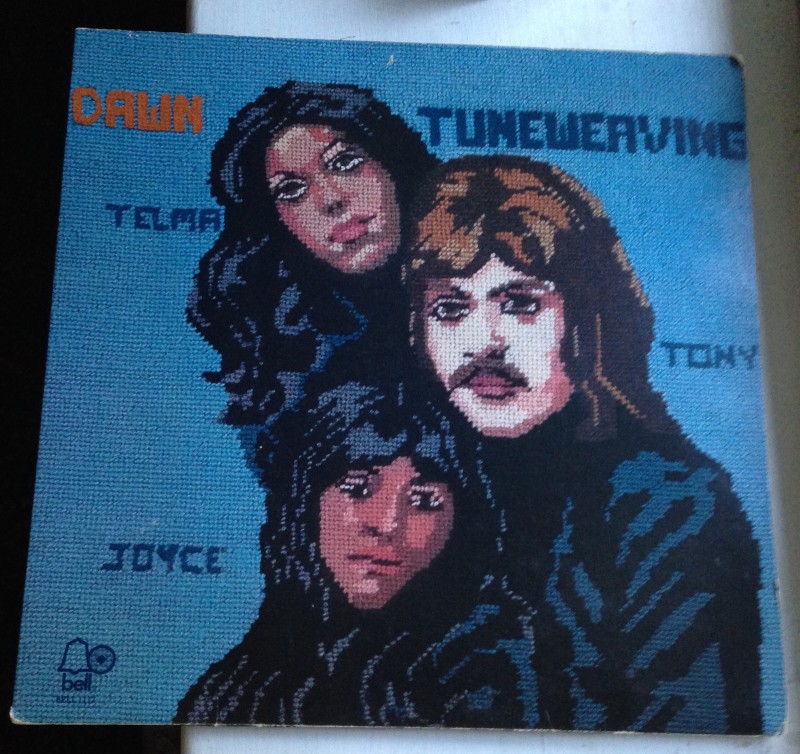
My mystery object, which I picked up at a thrift store, because I loved the cover image of the group done in embroidery, dates from 1973. Sister Spaceship looked it up and down and adjudged that whatever it was (they didn’t know what it was), if I wanted to secure its future for my children and grandchildren I should bury it in the backyard, in a “snack bag.”
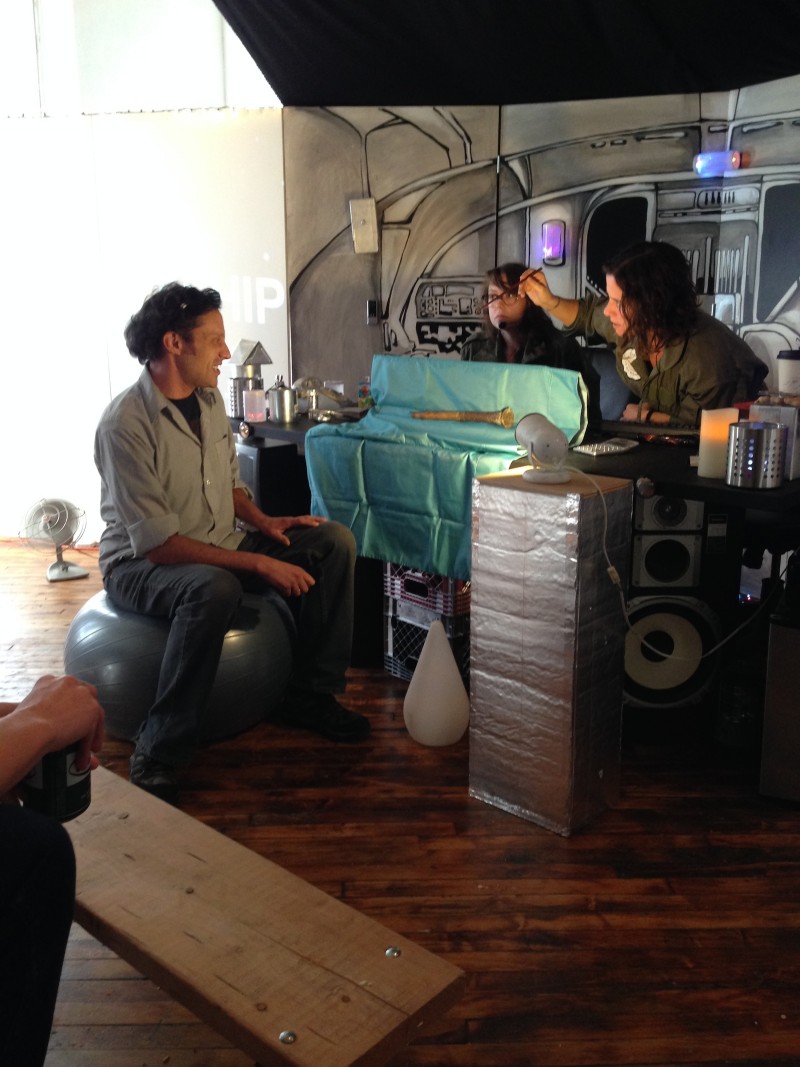
Another participant sat down on the Pilates ball and presented his long hollow tube for assessment. Sister Spaceship determined it was a penis sheath and that 18 penises had been in it. As with my object, it was suggested the penis sheath be placed in a “snack bag” for best conservation.
In addition to the whimsy, which was running high in the assessment schtick the two performers kept up a deadpan big sister/little sister patois that was funny and wise in the way of family dynamics. Little Sister Angie, who kept trying to trade something of theirs for a participant’s object, was told repeatedly by Big Sister Kristen that no, they can’t keep the participants’ things, and didn’t she remember, they had talked about this before.
Art in the Service of Future Generations at Slought
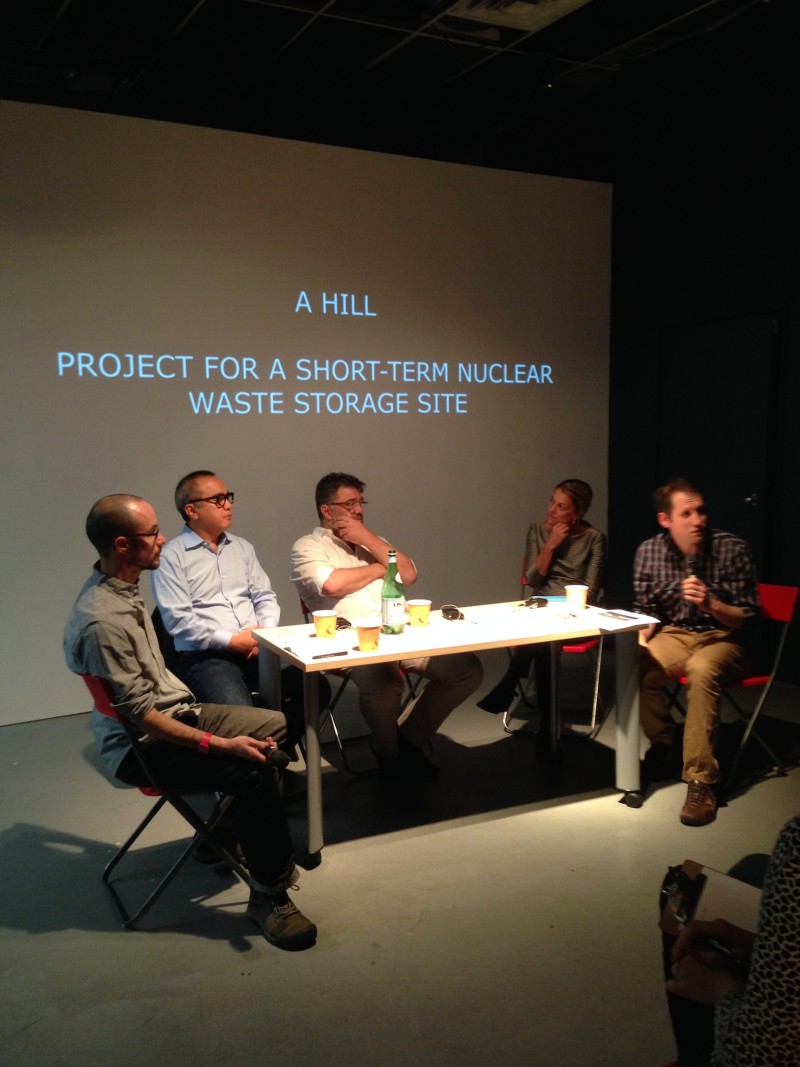
A few days earlier at Slought I sat in the audience for a very different kind of event, a serious panel discussion about public art and real world problems like nuclear waste disposal. The panel focused on the recent project in France by Paris-based German artist Veit Stratmann, who had been commissioned by the French National Agency for the treatment of Nuclear Waste to make a public art project at the French nuclear waste landfill site in the Champagne region. Stratmann’s project is a virtual one, which exists in a video animation showing the landfill in a farming region growing geometrically over the years. You can see the 6-minute video here – https://slought.org/resources/art_serving_future_generations
The artist said basically that he couldn’t find a solution for creating public art at the site. He also said that when art tries to find a solution it stops being art. So what he did was a research study. Art as research, asking questions, not posing answers. Using a metric he devised, his virtual landfill would add more soil each year growing 3/8 bigger annually for 300 years — a giant mesa of dirt on top of the waste. He would also dig a virtual trench around the landfill so that there would be two “scars” visible (a hole and a mound).
The region of France that houses the nuclear waste is the Champagne region, which, the artist says, is considered “the bin” (dustbin, garbage can) of France. “Everything they don’t want, they put there.” Since Napoleon’s time, many battles have been fought there.
Oddly, the French agency that commissioned the work was so taken with it they asked Stratmann whether they could actually do the project. Stratmann said the weight of the dirt on top of the concrete storage bunkers would collapse the bunkers, so no, the project is unrealizable except virtually.
The two events couldn’t have been more dissimilar. And it’s the tip of the iceberg in a Fall filled with amazing events and exhibits in our fair city. Get away from your computer, you won’t be disappointed.




